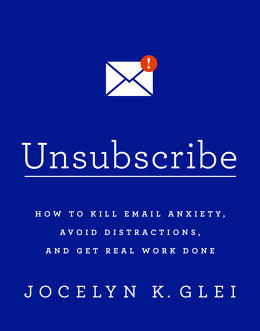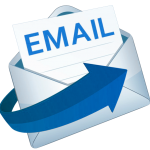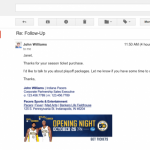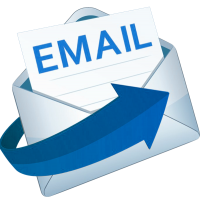Six Steps For Avoiding Never-Ending Email Threads
Chances are there’s more than one horrifyingly long, convoluted email thread sitting in your inbox right now. Sometimes that’s unavoidable—big projects often do take a lot of back-and-forth. But they don’t necessarily take as much as you might think. Here are some steps you can take to write more actionable, efficient emails that get the job done with fewer messages written in fewer words.
1. If You’re Asking A Question, Propose A Solution
Email is not a good venue for debate. Thus, messages that offer nothing but a question like—What do you think about X?—are generally ineffectual. Busy people don’t want to figure out your problems for you, and they don’t want to write you a lengthy response. They want to say yes or no and then move on to the next thing. So if you want to get a response—and to get your way—don’t just pose questions; propose solutions.
Let’s imagine that you’re emailing your boss to ask if you can attend a conference. You could write:
Hi Tina—I noticed that people are already booking hotels for the SXSW conference next year. I’d like to go. What do you think?
Or, you could write,
Hi Tina—I’ve been thinking about ways to enrich my work skill set, and it looks like there are some speakers and workshops at SXSW next year that would be very helpful. I can also put together a report to share what I’ve learned with the team after I return. I’ve estimated the cost, and it looks like a ticket, hotel, and airfare would run the company about $2,500. Do you think the company could sponsor me to attend?
The first message is short but lazy and will require numerous back-and-forth messages to clarify what’s really at stake. The second email is longer but includes everything necessary for the conversation to be resolved immediately. The writer has done her homework, the costs and benefits are clear, and it’s easy for the boss to just say yes. Being proactive in your communications takes more work upfront, but it pays huge dividends in the long run.
2. If It Isn’t Scannable, Don’t Hit “Send”
Use bullets, numbers, and/or bolding to make your email skimmable and digestible, emphasizing the key points. If you scoff at this type of spoonfeeding of information, go ahead and get over it. Emails are about getting results, not testing your recipient’s reading comprehension. Here’s an example of how you might recap next steps after a client meeting.
Hi Sharon—Great call (November 02, 2016)! I’m excited about next steps. Here’s a recap of what we discussed doing in the coming week to meet our deadline:
Action items for Sharon and team:
—Approve revised mockups (Due: Mon 4/9)
—Provide final copy for banners (Due: Wed 4/11)
—Supply hi-res photography (Due: Wed 4/11)
Because this email requires the client to do something, you want the action items to pop out of the email—thus the bold text—and be easily digested—thus the bullets. Due dates are also offset in parentheses so they’re easy to see. Remember: if you really want to get things done, success depends upon making it easy for your reader to quickly process the email and understand the salient points.
3. Give Them A Deadline
Is your email urgent? Does it need a response now? In two days? In two weeks? It may surprise you to learn that busy people love deadlines because they help prioritize exactly when things need to get done. In fact, I’ve found that emails that have no timetable are more likely to get ignored. You certainly don’t want to be imperious or overly demanding, but do give your reader some polite context for timing.
If you’re emailing a close colleague about an urgent task, you can be pretty straightforward about timing:
For the project to stay on schedule, I’ll need a response from you in the next 24 hours if possible.
If you’re extending an invitation to someone you haven’t met, you might politely share your follow-up timeline:
I’m sure you’re busy and will want time to mull this opportunity over. I’ll follow up in two weeks if I haven’t heard from you.
Or say you want to allow your boss or a client to weigh in on a decision but need to move forward if they don’t respond in time:
If I don’t hear back from you by this Friday, Aug 17, I’ll go ahead and proceed with the solution I’ve proposed above.
Including a deadline is like dropping an anchor: it fixes your request in space and time, making it more likely to get noticed and get done.
4. Write Your Subject Lines Like Headlines
For your email to be read, it has to be opened. Your goal should be to compose a subject line that is clear and, ideally, provocative. It’s much like writing a compelling headline for an article or blog post that you want people to click on. Let’s say you’re a successful musician reaching out to a designer about doing the cover for your new record. You have a decent-sized audience, so you expect the album to perform well. You could use:
Subject: Design Gig
It’s accurate, but it lacks specificity and makes your email sound like a humdrum offer. Alternatively you could use:
Subject: Cover design for high-profile album release?
This is still accurate, but it piques curiosity by clarifying what exactly the project is and promising good exposure. Especially when you’re writing an “ask” email to someone you’ve never met before, the subject line functions like a first impression. And you only get one chance to make a first impression.

5. Edit Your Messages Ruthlessly
After you’ve drafted your email, re-examine it with an unsympathetic eye and take out anything unnecessary. Being clear and concise from the get-go saves time for everyone. (Of course, you want to achieve this without seeming abrupt, but more on being friendly in the next section.) There’s no doubt it takes more time to craft a tight and to-the-point email, but it will also be much more likely to get a response.
6. Preview All Messages On Your Phone
As mentioned earlier, your email message is most likely going to be opened first on a mobile phone. Therefore, it’s wise to understand what your message will look like on a handheld. What seems digestible on a massive desktop screen often looks like War and Peace on a mobile phone. Preview your message on the small screen, and if it still looks way too long, ruthlessly edit it again. If your message gives the impression of being overwhelming, it’s probably going to get ignored.
This article is excerpted from Unsubscribe: How to Kill Email Anxiety, Avoid Distractions, and Get Real Work Done by Jocelyn K. Glei. Copyright © 2016. Available from PublicAffairs, an imprint of Perseus Books, LLC, a subsidiary of Hachette Book Group, Inc. It is reprinted with permission.
Fast Company , Read Full Story
(38)














